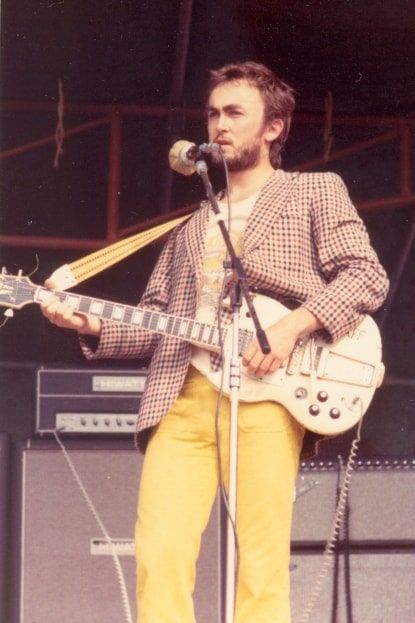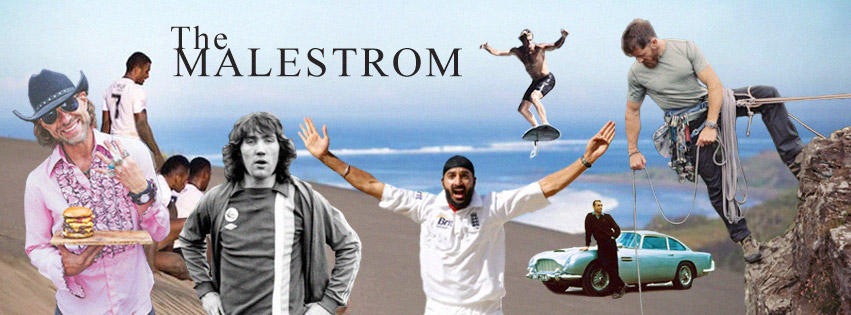
“Nothing is more common than unsuccessful men with talent.” – Calvin Coolidge
In the first of our series on ‘the greatest…’ we looked at the prodigious yet unfulfilled footballing talent that was Robin Friday. A story of excess and ultimately self-destruction, but a man who left an indelible mark on those few lucky enough to have seen him in action.
We also looked at the life and career of boxer Sam Langford, and his astonishing pound for pound record, a man who punched above his weight quite literally, but due to the sheer power in his fists was denied shot after shot at the big prize.
In this third edition, we will take a look at the career of Peter Ollie Halsall, who for aficionados of rock and roll guitar is a common and enduring presence, but for the rest, he might just be the greatest guitarist you’ve never heard!
He was once shortlisted by the Rolling Stones as a potential replacement for Mick Taylor and his prodigious talent saw him compared to the late great Jimi Hendrix, while also inspiring another guitar hero Allan Holdsworth. But who was Eddie Van Halen’s favourite guitarist?
“I’ve always played music but I don’t follow anybody… To be honest, I’m more into people and situations than the intrinsic technicalities of music.” Olli Halsall, New Musical Express, 1974
Born on 14th March 1949, on a working-class estate in Southport, in the North West of England, Ollie’s love of music began at a tender age as he would while away the hours listening to pirate radio.
The first instrument to catch his attention was the drums, and he became proficient, displaying a natural talent for timing he would go on to apply throughout his musical journey.
Ollie as he was known, is probably best recognised for his work in the pastiche laden Beatles parodying band The Rutles, due in the main to their own commercial success, where Ollie performed in the large part the Paul McCartney inspired tracks.
In a rather uninspiring twist Ollie’s significant work with the band was never credited, despite performing many of the instruments and providing vocals to which Eric Idle was acknowledged on the songs Doubleback Alley, With a Girl Like You and Get Up and Go.
However, it was his time firstly with psychedelic pop group Timebox, where Halsall took up the guitar that is most significant. Formed in Halsall’s hometown of Southport in 1965, originally under the guise of Take 5, it was after turning professional and heading to London to tour with The Kinks and The Small Faces among others that they enlisted American vocalist Richard Henry.
After modest success and a revolving door of member changes, the band settled with Mike Patto as lead vocalist and forged a reputation as one of the most exciting live acts on the scene and emerged as new group Patto.
The blend of progressive jazz-rock, featuring Halsall’s sublime mastery of the guitar was forging his reputation. Left-handed, Halsall played a white Gibson SG Custom guitar, on which his unique, off the cuff, inventive style was born.
“Ollie’s playing was ‘state of the art’ for his time – not just for his cosmic soloing ability, but also for his totally complete approach to the instrument: comping, rhythm playing, tone and timing. I, like many other ‘disciples,’ used to look at [his] white SG and yearn to get one ….” Brian Godding (Guitarist)
Ollie Halsall had many strings to his bow when it came to guitar techniques. Firstly he had an innate sense of melody, and the ability to play the guitar to whatever someone may be singing rather than the other way around, an incredibly difficult skill.
Secondly, he could play fast, very fast. Quicker than the likes of Van Halen, Steve Vai, or pretty much anyone to come along before or after him.
He was heavily influenced by 50’s pop records and jazz saxophone and piano players rather than his contemporaries, further adding to his unique sound. A sound Ollie perhaps showcased best when with Patto using a white Gibson SG custom with 3 pickups converted for his left hand playing.
The Gibson’s smaller spacing of frets than say a Fender lent itself to the fast playing Ollie mastered so completely and it had a quality of tone which is clean yet with the bit of bite you can hear on the records.
Disillusioned with the direction Patto were headed, Halsall left the band in 1973, and joined up with another prog-rock outfit Tempest for a short stint before quitting and joining psychedelic superstar Kevin Ayres with whom he would continue to work on and off with right up until his sad passing in 1992.
In 1975 Halsall briefly reunited with Patto to perform some exclusive gigs and off the back of this brief sojourn they formed a new musical collective Boxer.
Boxer signed a lucrative contract with Virgin Records, however, when Mike Patto died in 1979 they disbanded and Ollie Halsall returned to his nomadic musical journey.
What set Ollie Halsall apart was his natural talent, he was an incredible musician, by all accounts you could hand him a tin of beans and a glass of water and he’d doubtless make a tune.
This instinctive musical prowess was underlined by the fact that he was one of the few but equally most proficient virtuoso’s of the vibraphone, he was also an accomplished drummer but moreover had a knack of mastering any instrument put in front of him.
In an extract from the Kevin Ayers fanzine Why Are We Sleeping, Barry Monks (Ollie Halsall Archive) states,
“Ollie will be generally acknowledged in years to come, as is the way of these things. Besides Hendrix, only two others stand in the same league – Richard Thompson and Django Reinhardt.
I gave up trying to emulate Halsall many years ago but I am left with a spirit or an idea – a lateral approach which you can sometimes latch onto on a good night, whilst not actually copying. Ollie’s secret was founded on the premise that he never listened to his contemporaries.”
Ollie Halsall’s solo work, like much of his career, was unspectacular commercially. He recorded a number of solo projects including Caves (a collection of demos from 1979), Abbots Langley (a compilation from his work in the eighties with drummer John Halsey) and The Happening Combo (featuring demos for Kevin Ayres 1988 album Still Life With Guitar).
There was also Ollie and The Blue Traffs from 1972 and Rusty Strings from 1973 which remain unreleased.
Halsall’s life came to a premature end in 1992 in his flat in Madrid, Spain, he had a suffered a fatal heart attack due to an overdose of heroin. A tragic ending for a supreme talent, who ultimately had an unremarkable career.
His time in Spain was directly linked to his ongoing musical bond with Kevin Ayres who once said in an interview with Uncut magazine in 2008,
“Ollie Halsall is one of the most under-rated guitarists in the world – he played the shit out of people like Clapton and Jeff Beck.”
While in Spain Ollie worked with numerous notable musicians, one of which was the wildly successful Spanish rock group Radio Futura. It was at this time that, with one of the band’s members struggling with an addiction to heroin, Ollie offered to act as mentor and chaperone.
And in a truly ironic tragedy, Halsall began smoking the drug himself having been assured by the misguided belief that doing so lacked the dangers associated with injecting. However, one fateful evening in desperation Ollie Halsall was resigned to injecting and misjudging the dose took a fateful leap.
He was a man with all the musical talent in the world, who for one reason or another never gained the recognition he deserved. But his music lives on and perhaps like others before him Ollie may become more renowned posthumously. Almost certainly he’s the greatest guitarist you’ve never heard.
“Ollie may not have been the best guitarist in the world, but he was certainly among the top two.” John Halsey (Drummer)
Click the banner to share on Facebook


